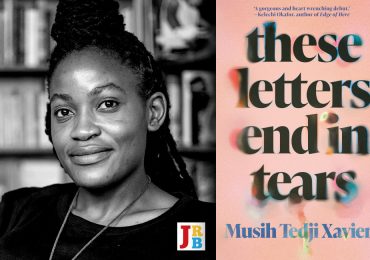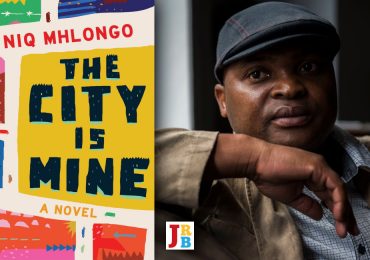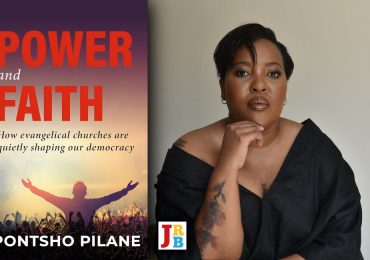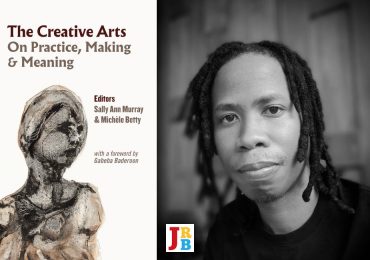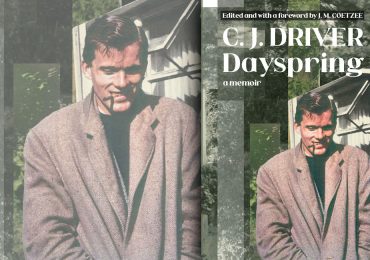The JRB presents an excerpt from 1986, the new book by William Dicey.
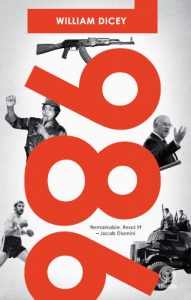
1986
William Dicey
Penguin Random House SA, 2021
~~~
OCTOBER
On 1 October, M-Net was launched. It was South Africa’s first pay-television channel, and the first channel of any kind that wasn’t controlled by the state. M-Net’s major shareholder was the print-media company Nasionale Pers. In time, it would become the multi-media conglomerate Naspers.
M-Net’s programming consisted of general entertainment, movies and sport. It was prohibited from broadcasting news programmes. Speaking on the day of M-Net’s launch, PW Botha made it plain that the SABC was to retain its monopoly on the dissemination of information.
Television came late to South Africa. The government resisted calls in the Fifties and Sixties, deferring to the Dutch Reformed Church and the Broederbond. The Calvinist churchmen feared moral decay and corruption, while the Broederbond was wary of ‘subversive’ ideas from abroad. ‘For the time being at least,’ noted The Times of London in 1960, ‘there is to be no television for fear that it might open unwanted windows on the world.’ Dr Albert Hertzog, the minister of posts and telegraphs, was central to any decision. He considered television ‘the devil’s own box’, and declared that it would only be introduced over his dead body. Friends of his had visited Britain, he explained. They had told him that ‘one cannot see a program which does not show black and white living together, where they are not continually propagating a mixture of the two races’.
Calls for television grew louder in 1969, after the rest of the world got to see Neil Armstrong walk on the moon. Hertzog had resigned by then, so the government appointed a commission of inquiry. The commission came out in favour of television, provided that ‘effective control’ was exercised. In Native Nostalgia, Jacob Dlamini makes the point that the Nationalists could hardly claim to be the last defenders of ‘Western civilisation’ in Africa and yet be ‘opposed to television’.
Full transmission commenced in January 1976. Many of the early shows featured the conservative values of the American west: Shane, Bonanza, The Little House on the Prairie. No sport could be broadcast on Sundays. In the early years, television was largely a whites-only affair, with broadcasting split evenly between Afrikaans and English. In 1982, two additional services were added: TV2 for speakers of Nguni languages and TV3 for Sotho languages. Government attitudes softened in the early Eighties. By the time of M-Net’s launch, The Cosby Show was a favourite. Other popular programmes were The A-Team, Airwolf, Knight Rider, Dallas, Derrick and Koöperasiestories.
As the devil’s box made its way into more and more households, it became integral to the government’s propaganda campaign. Anxious white South Africans were assured that their nation was a bastion of Christian democracy and that their security forces held the upper hand against communist insurgents. The SABC tended not to show scenes of unrest. When their hand was forced, they unfailingly depicted township dwellers as a destructive and disorderly mob, while the security forces were models of restraint and order.
American journalist William Finnegan visited South Africa in 1986. He observed that the picture of daily life available on television and radio ‘seems to bear only the most distant resemblance to what is actually happening in the country’. He found news reporting to be ‘selective and tendentious, customarily presenting only the government’s view of events while attacking or ignoring its opponents’. Finnegan’s view is borne out by media expert Professor Johan van Zyl, who observes that the SABC’s approach to the news was ‘characterised by selection, omission and placement’ and that these combined to give ‘a weird picture of the world—a self-centred view of South Africa as a badly misunderstood and wrongly persecuted little nation’. White South Africans knew more about what was happening in Lebanon and Nicaragua than in their own country.
While local television may have been the government’s friend, foreign television was not. By the mid-Eighties, nightly scenes of unrest were beamed into homes around the world. Images of children taking the fight to soldiers in armoured vehicles fuelled debate about South Africa’s place in the world.
~
On 1 October, actors Robert Colman and Matthew Krouse went into hiding. Their satirical play, Famous Dead Man, had been banned the previous day and they’d received death threats.
The dead man in question was former prime minister Hendrik Verwoerd. In one scene, Verwoerd tells God to ‘get out of my chair’. The show had been running at the Black Sun in Berea, Johannesburg, for eight weeks before anyone objected. The state apparatus then leapt into action. The Publications Control Board convened an urgent meeting and declared the show ‘undesirable’. It acknowledged that the Publications Act did not protect political figures from ridicule. In this instance, however, it ruled that Verwoerd had been ‘chosen as a symbol of a large section of the Republic in an attempt to insult and degrade them’.
The Weekly Mail traced the actors to a flat in Braamfontein, where they were lying low. They may have written the jokes, said Colman, ‘but we didn’t write the history’. Krouse was more circumspect: ‘We aren’t horny for the baton, we’re horny for the stage.’ He quoted a piece of advice from Breyten Breytenbach’s True Confessions of an Albino Terrorist: ‘Never go to jail.’
~
On 2 October, the US Senate overturned President Ronald Reagan’s veto on sanctions against South Africa. As a result, the Comprehensive Anti-Apartheid Act came into force. It imposed the toughest penalties yet by an industrial nation. Immediate effects included the withdrawal of landing rights for South African Airways and a prohibition on all new US investments. Within three months, there was to be a complete ban on all imports of South African uranium, coal, iron ore, steel, textiles and agricultural products. South Africa’s sugar quota was to be transferred to the Philippines.
While many had suspected the veto might be overturned, few had foreseen the 78–21 margin. The vote reflected outrage, suggested commentators, at last-ditch efforts by Pik Botha and Mangosuthu Buthelezi to intervene in support of the veto. Senator Ted Kennedy labelled Botha’s threat to stop purchases of US grain ‘one of the most notorious attempts by a foreign government to interfere in the foreign policy of the United States’. Botha, for his part, complained that the senators were being too ‘emotional’ and that their perception of what was actually happening in South Africa was ‘twisted’.
The vote was Reagan’s biggest foreign-policy defeat to date and sounded the death knell for his administration’s policy of ‘constructive engagement’ with Pretoria. Where the Cold War warrior saw PW Botha beating back the communists, the Senate saw institutionalised racism, cross-border raids and martial law. American pension funds and university endowment funds had long been disinvesting from South Africa. Companies such as General Motors, General Electric, Johnson & Johnson and IBM now found that their small operations in the country weren’t worth the ‘flak factor’ they faced back home. In 1986 alone, South Africa experienced a net capital outflow of over R6 billion.
Reagan’s argument that sanctions would ‘hurt blacks most of all’ had been hotly contested. ‘When the ladder falls over,’ retorted Bishop Tutu, ‘it is those at the top who get hurt most.’ During his visit to the US earlier that year, Tutu had shared the results of a survey which showed that seventy per cent of black South Africans welcomed sanctions. ‘We are desperately poor already,’ a resident of Oukasie township outside Brits told American journalist Richard Stengel. ‘We are prepared to suffer. What more can sanctions do to us? We only eat pap here.’
While the passing of the Anti-Apartheid Act was a victory for the ANC, it wasn’t all good news. The act singled out the ‘abhorrent’ practice of necklacing as an obstacle to political progress. It prohibited US assistance to any individual, group or organisation that supported ‘execution by fire’.
~
On 17 October, the Weekly Mail ran an article about a recent phone-in show on Radio 702. Children had been invited to say what action they would take if they were South Africa’s president. ‘We have lots of troubles because blacks are rioting,’ said thirteen-year-old Marco from Johannesburg. ‘The Prime Minister should have a day when everybody can collect a gun and just kill one of them.’
The article noted that the show’s host, John Berks, ‘was audibly shaken by the deep conservatism of most of the callers’.
~
- William Dicey is the author of two critically acclaimed books, Borderline (2004) and Mongrel (2016). He lives in Cape Town.
Publisher information
A fascinating history of apartheid South Africa.
What was life really like in apartheid South Africa? 1986 was a pivotal year in our history. It was the year of the vigilante, the year of the necklace—but also the year the talking began.
Starting on 1 January, William Dicey presents a compelling diary of a terrible year. He focuses on ordinary people, showing what it’s like to live under an authoritarian regime—from the six hours a day that black workers in KwaNdebele spent on buses, to the rebel sporting tours that provided a distraction for white South Africans.
Some stories foreshadow the miracle of 1990—for instance, the deputy commander of Pollsmoor Prison takes Nelson Mandela on a scenic drive around Cape Town, years before his eventual release. Other stories shine a light on our current conflicts.
For those who were there, this book presents fresh material drawn from sources including little-known histories, memoirs and newspaper articles. For those not yet born in 1986, this is far more than a historical narrative; it reveals the gritty truth about daily life during apartheid.
This is a book that can be read sequentially or dipped into, each vignette being a self-contained, riveting story.
Written in crisp prose, William Dicey’s engrossing 1986 is a succinct work of historical excavation, deftly evoking the spirit of the times.

